Written by Mariel Marshall, with contributions from Adrienne Wong
On Monday, November 6, at the Alt Hotel in Ottawa, I delved into the rapidly evolving world of artificial intelligence and its impact on the creative performance landscape. This conversation was part of CAPACOA’s 2023 Confluence conference, featuring Canadian artist Adrienne Wong.
What is Artificial Intelligence?
Artificial Intelligence (AI) is a rapidly evolving technology that is poised to disrupt many aspects of society, from the global job market to everyday tools.
At its core, AI involves simulating human intelligence in machines, a feat achieved through a myriad of subfields, such as machine learning, natural language processing, and computer vision. Generative AI is a subset which specializes in creating content that closely resembles human output. Although these sophisticated tools give the impression of generating content independently, they are in fact trained on extensive datasets, analyzing and processing billions of parameters derived from both text and images. The advanced capability of AI represents a significant leap from its early, more clunky predecessors, marking a new era of sleek, refined, and highly effective AI applications.
AI in Performance: Case Studies
In the realm of artistic expression and performance, AI’s impact is both profound and multifaceted. Adrienne Wong and I have encountered several innovative projects where artists have explored the use, adoption and/or integration of AI in live performance. Here is a roundup of some of the works discussed. These case studies offer a glimpse into what artists are currently exploring and what’s soon to come:
- Beyond the Fence (UK, 2016): A musical entirely generated by AI, including storyline, characters, and music. Lyn Gardner called it, “A strong cast give the piece some welly, but using elements that a computer has identified as key for musical success leads to a dated middle-of-the-road show full of pleasant middle-of-the-road songs, along with a risibly stereotypical scenario and characters.”
- THEaiTRE (CZ): AI-driven theatrical ventures, including ‘When a Robot Writes a Play’, ‘Permeation’ and THEaiTRobot 2.0.
- Some Must Watch While Some Must Sleep (CAN/US): An interactive, durational performance via SMS text messaging. AI LLM, trained on Tanya Marquardt’s writing, converses with participants.
- Improbotics (International): An AI chatbot performs alongside a human cast and tries to pass as human, as it sends lines to one of the improvisers via an earpiece.
- Annie Dorsen’s Algorithmic Theatre: Pioneering algorithmic theatre since 2008, including Prometheus Firebringer.
- Emerging Projects: includes The Builders Association, NY and Post Humains, QC.
- LucyAI by bluemouth inc. (CAN/US): An immersive and interactive performance exhibition, with an AI that embodies the life of artist Lucy Simic. Watch the Demo Video of LucyAI.
Going Deeper: AI’s Impact on the Arts
In contrast to creative possibilities with AI, there is also the potential for misuse, ethical dilemmas, and job displacement in the arts due to AI. However, we highlighted the adaptability of artists in navigating these challenges. The conversation included the impact of AI on intellectual property rights, which are rapidly evolving.
Additionally, we looked at the environmental concerns of this technology, with the significant carbon and water footprints of models like GPT-3. More research, understanding and sustainable practices are needed.
The Future
Looking ahead, the future of performance is at a critical intersection of creativity and rapidly advancing technology. Adrienne emphasized the fact that artists often need about 18 months to digest something new before transforming it into a work. She also recognized that certain aspects of human experience (see her self serve ‘apology generator’) can’t be easily offloaded to a machine.
As technology evolves, artists, particularly those with progressive values, must navigate the profit motives that are driving these advancements. Adrienne challenged creatives to resist and reshape technology in a more equitable manner.
In a similar vein, my primary concern lies in the noticeable underrepresentation of AI professionals within the creative sector, a gap that poses risks of exploitation and potential obsolescence for our field. To address this in a proactive manner, I believe now is the crucial moment for us to actively engage in the development and shaping of this technology and its applied use. It’s particularly important to encourage the involvement of women and non-binary individuals, groups traditionally underrepresented in tech, to bring diverse perspectives and innovation to the forefront. The team at Tandem Experiences –– incubated at the Innovation Boost Zone at Toronto Metropolitan University, and supported by advisors from the arts and culture space, including Owais Lightwala (the Creative School at Toronto Metropolitan University) and Mel Hague (Artistic Director at Factory Theatre) –– is dedicated to this effort and to the practical application of AI to enhance arts and cultural engagement.
Conclusion: Embracing AI in the Arts
History has consistently shown that new technologies bring challenges. Painters once worried about the camera making them obsolete. Skepticism surrounded the longevity of the internet. However, each technology expected to disrupt the arts has, instead, sparked revolutionary changes. AI will be no exception — integrating it into our creative toolkits for collaboration, productivity, and performance allows artists to envision a reimagined contemporary performance practice. This shift has the potential to foster a more connected and impactful performance ecology. Yet, as this transformation unfolds, we urge artists to remain critical of this technology’s adoption, proliferation and ongoing usage, while staying open to new creative possibilities.
Further Reading
- “The Dangers of AI Intoxication” by Annie Dorsen, in American Theatre
- “Resisting AI: An Anti-fascist Approach to Artificial Intelligence” by Dan McQuillan
- John Tasioulas’ “The role of the arts and humanities in thinking about artificial intelligence (AI)”
Creative Generative AI Productivity Tools:
Here’s a roundup of some notable AI tools available that are well positioned to support creative practice, artists and presenters. This is not meant to be a comprehensive list, but rather a selection of tools that Adrienne and I have found useful and/or interesting in our explorations. I hope it’s a starting point for anyone to dip their toes in.
- AI Protective Tools for Creators:
- Nightshade – creates mismatch between the image and the metadata and is used to “pollute” future AI models. Proposed as a “last defense for content creators against web scrapers that ignore opt-out/do-not-crawl directives, and discuss possible implications for model trainers and content creators.”
- Glaze – Changes pixels in an artwork to make it harder for an AI model to mimic an artist’s style.
- Kudurru – tracks bots “scraping” information on the internet, identifies their IP addresses, blocks them and sends back unwanted data. This is extended to all members of the network.
- Mist – a preprocessing tool that renders the image unrecognizable to AI image generating apps.
- Generative Tools:
- ChatGPT by OpenAI: A versatile language model capable of generating human-like text, answering questions, and more.
- Cohere: Canadian company that offers large language models for various applications, including natural language understanding and generation.
- Hugging Face: many open source offerings.
- Translators:
- DeepL Translator: Utilizes AI for high-quality translations in various languages, including English → French.
- Image Generators:
- Midjourney: Specializes in AI-powered visual content creation, useful for social media, marketing, and art. Replaces need for stock imagery.
- DALL-E by OpenAI: An AI program that generates images from textual descriptions.
- Video Generators:
- Synthesia: AI video generation platform, allowing users to create videos from text inputs. Useful for audio descriptions.
- Voice Cloning: allowing for the creation of realistic and customizable voice replicas.
- Replica Studios: AI voice actors for games, films, and virtual reality.
- Descript’s Overdub: Integrated within the Descript editing platform, Overdub allows you to clone and create a realistic text-to-speech version of your voice. It’s widely used in podcasting and video editing.
- iSpeech: Offers a range of free text-to-speech and voice cloning services for various applications, from call centers to mobile apps.
- Resemble AI: Specializes in creating custom AI voices that can be used for various applications, including interactive voice response (IVR) systems and digital assistants.
- Audience Growth:
- Broadw.ai: Ticket booking platform.
- Tandem Experiences Culture Guides: discovery platform with personalization for audiences, and culture guide creation for cultural connectors.
- Music Generators
- AIVA (Artificial Intelligence Virtual Artist): AIVA uses deep learning algorithms to compose emotional soundtrack music. It’s particularly popular for creating classical and cinematic music.
- Soundraw.io: An AI music generator for video creators, allowing users to create unique, royalty-free soundtracks based on various themes and styles.
- LANDR: Offers AI-powered music creation and production tools, including mastering, digital distribution, and plugins. LANDR is known for its ease of use and quality output.
- Privacy:
- Private AI: Specializes in privacy-preserving AI solutions, which is crucial for maintaining confidentiality and security when working with generative AI such as ChatGPT.
About Adrienne Wong
Adrienne Wong, the Artistic Director at SpiderWebShow, co-curates FOLDA, a festival highlighting live digital art in Kingston, ON. Her notable works include ‘Landline’, an audio-SMS performance, and ‘Me On The Map’, focusing on urban design and ethical decision-making. Currently, she is pursuing an MFA in Writing at the University of Victoria, working on SmartSmart, a project examining the human-smartphone relationship through participatory theatre. Learn more at FOLDA and AdrienneWong.ca.

About Mariel Marshall
I’m an interdisciplinary artist and tech entrepreneur with 15 years of experience in the creative sector. Joining bluemouth inc. in 2015, I co-created ‘Cafe Sarajevo’ and am currently developing two new projects: ‘ELEPHANT’ and ‘LUCYAI’ (in collaboration with ReImagine AI). In addition to the creation of new work, I’m also the co-founder of Tandem Experiences, where I’m leveraging technology, including applied AI, to develop solutions to audience discovery and engagement. My work includes AI-powered product development. For more, visit Tandem Experiences, bluemouthinc.live
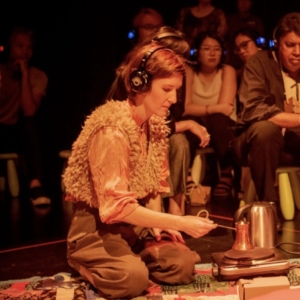



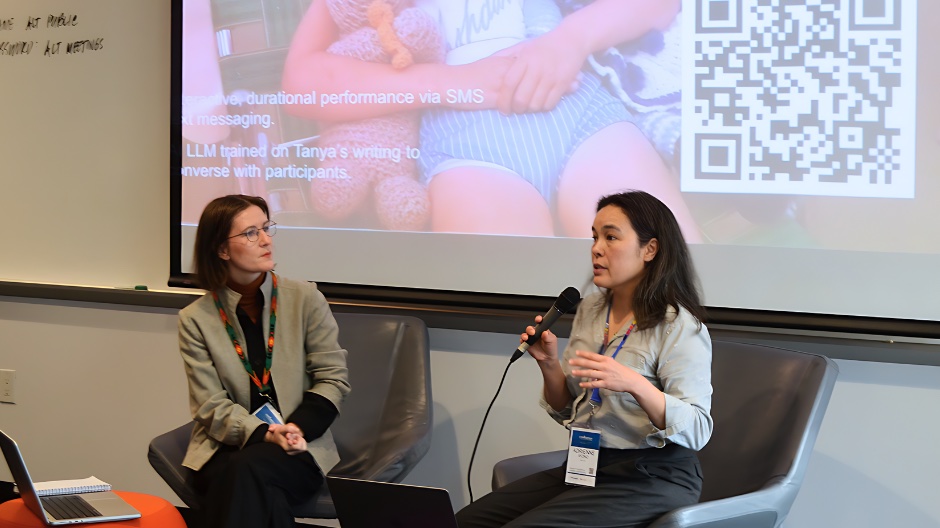
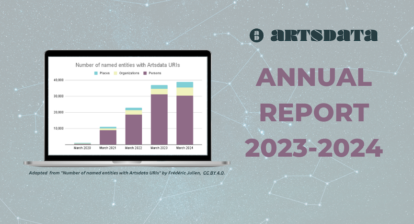
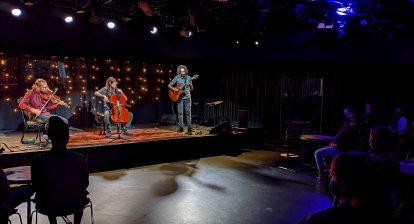
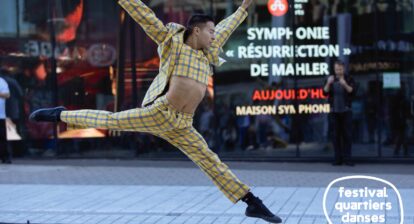
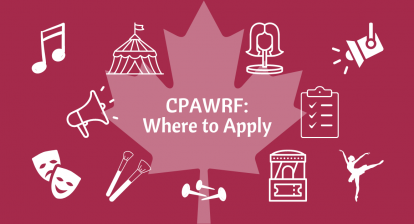

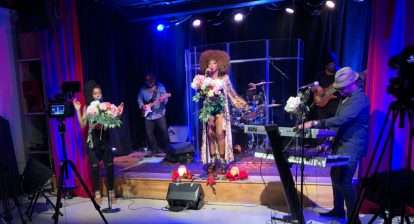
Yahir Ali
It was a pleasure reading this.